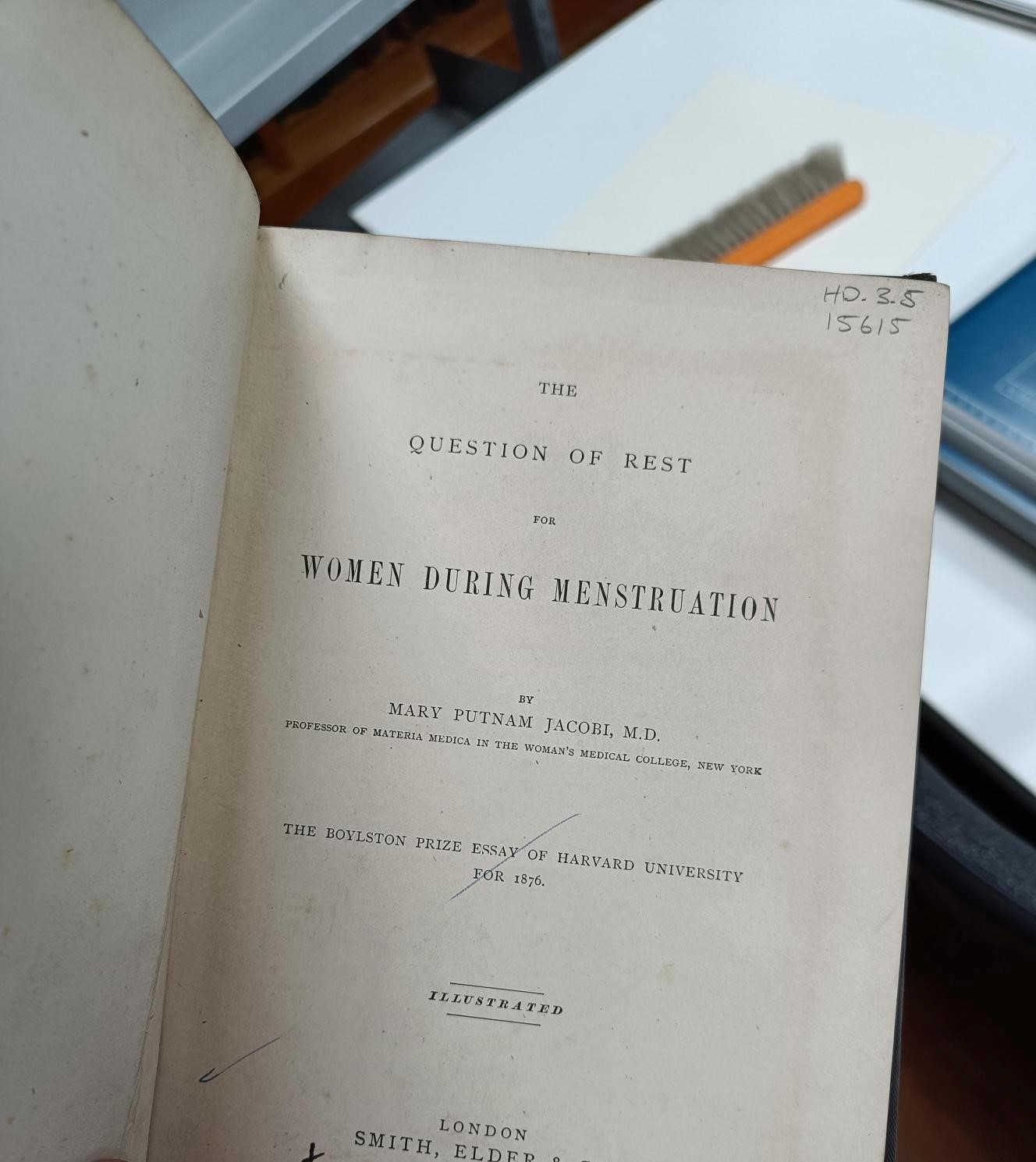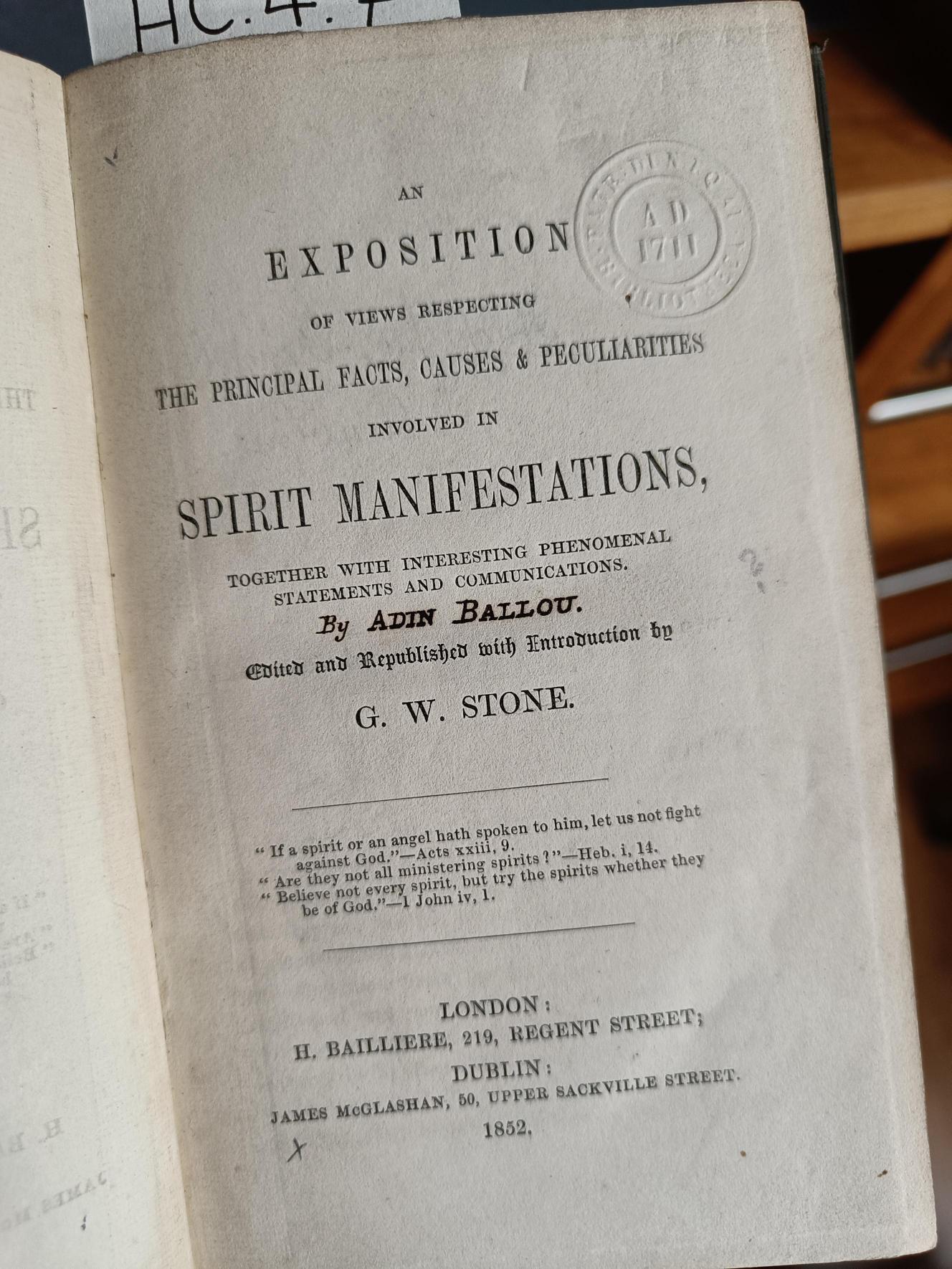Bizarre book topics and my time with them
As our library is over 300 years old, it is only natural that we have a lot of books: some new, and a lot of old. Some are dusty, and some of them have not been touched in many, many years. They cover an array of topics, some a tad bit outdated, and some are downright unusual! Over the last few weeks, I have been getting rather well acquainted with the books in our Hearn Room to clean, stock-check, label the books and line the shelves, to better conserve and account for them all. When your job is to go through centuries-old pieces of written work it is hard not to become intrigued with the wild and mysterious topics discussed in the past. I have attempted to record and research some of my favourites, some of them clearly medically entwined, some of them not as much.

The first one that caught my eye, titled Sex Efficiency Through Exercises: Special Physical Culture for Women (1933) by T.H.H. Van de Velde sought to provide insight into “the sphere of conjugal relationships and the increase of happiness” for women. It focuses on women maintaining their sexual capacity after giving birth, with emphasis on its purpose to enhance the physical intimacy of marriage. The author states that sex has both dignity and value to it, in both mental and emotional ways. Saying that Van de Velde does like to refer to women as the “child-bearer” and men as “the lover” – not the most ideal language. Not only that, but the book also provides black-and-white photographs of women performing these exercises.

The most surprising part about seeing books written about female health (and trust me, there are a lot) is seeing one written by an actual woman. In 1878 Mary Putnam Jacobi wrote The question of rest for women during menstruation. In the preface, she gives an endearing thanks to all the women (many of whom were strangers) for their help in providing statistics for her essay. Her logic about those who can experience pain can be argued with, as can her conclusion that “there is nothing in the nature of menstruation to imply the necessity, or even the desirability, of rest, for women whose nutrition is really normal”. She does conclude however that “46 per cent. of women suffer more or less at menstruation, and for a large number of these when engaged in industrial pursuits or other, under the command of an employer, humanity dictates that rest from work during the period of pain be afforded whenever practicable” – something still worth remembering today.
On a different note, The Alpine Winter Cure (1884) details the climate and conditions of the Swiss Alps with regard to their benefits of different diseases, namely tuberculosis (aka Consumption). There are discussions about the construction of buildings deemed to be “Alpine Cure Stations”, with features such as large quantities of solar light (which apparently is “highly beneficial” on the quality of the blood), and electrical circulation of air for the purpose of distributing drugs to particular rooms, which seems more than a little ominous for my liking. The author says that “Sharp, frosty days in the winter season are the most favourable”, as the cold air on the lungs acts as a powerful sedative, to promote healing of cavities and ulcers of the lungs. A chilling retreat, truly.
As someone with a background in archaeology I was pleasantly surprised to come across several published copies of the Irish Annals, tracts, mythologies and religious texts – not something you necessarily would expect to find in a medical library. The martyrology of Donegal: a calendar of the saints of Ireland (1864) indexes many of the Irish saints, as well as poems celebrating their virtues and the events of their lives. The book details some specific events such as the martyrdom of Maolmuire O’Gormain and Tallaght, and poems by St. Moling of Ferns, St. Ciaran of Clonmacnois and St. Diarmaid of Inis-Clothrann. We also have various versions of the Annals of Ireland, the Banquet of Dun na n’Gedh, the Battle of Magh Rath, as well as books on ancient hymns and medieval tracts.

In the span of a few weeks, I have come across books on animal locomotion and mechanics, their colours and what they mean, the psychology of the criminal, the history of hallucinations, apparitions and dreams, a textbook on insanity, books on fungi and fresh-water algae, sleepwalking and hypnotism, and the correlations of consciousness and organisation. I look forward to what else this small (but mighty!) collection has to offer! It is truly fascinating to see where the lines of medicine intersect with areas such as geography, philosophy, archaeology, folklore and the paranormal.
Chiará Morgan
Assistant Keeper of Collections
List of books mentioned:
Ballou, Adin. (1852). An exposition of views respecting the principal facts, causes, and peculiarities involved in spirit manifestations: together with interesting phenomenal statements and communications. London: H. Bailliere.
Brierre, A.-J.-F. (1852). Des hallucinations; ou, Histoire raisonnée des apparitions, des visions, des songes, de l’extase, des rêves, du magnétisme et du somnambulisme. Paris: Germer Bailliere.
Clyn, John. (1849). The annals of Ireland ... together with the annals of Ross. Dublin: The Irish Archaeological Society.
Cooke, M.C. (1875). Fungi: their nature, influence and uses. London: Henry S. King & Co.
Cooke, M.C. (1890). Introduction to fresh-water algae with an enumeration of all the British species. London: Trubner and Co. Ltd.
Ellis, H. (1890). The Criminal. London: Walter Scott.
Jackson, R.E. Scoresby. (1862). Medical climatology, or a topographical and meteorological description of the localities resorted to in winter and summer by invalids of various classe, both at home and abroad. London: John Churchill.
Jacobi, Mary Putnam. (1878). The question of rest for women during mensturation London: Smith, Elder & Co.
Mac Fhirbhisigh, Dubhaltach. (1860). Annals of Ireland; three fragments. Dublin: The Irish Archaeological Society.
O’Clery, Michael. (1864). The martyrology of Donegal: a calendar of the saints of Ireland. Dublin: The Irish Archaeological Society.
O’Donovan, John. (1842). The banquet of Dun na n-Gedh : and the battle of Magh Rath : an ancient historical tale now first published from a manuscript in the Library of Trinity College, Dublin. Dublin: The Irish Archaeological Society.
Nisbet, J.F. (1900). The insanity of genius and the general inequality of human faculty physiologically considered. London: Grant Richards.
Pettigrew, J.B. (1874). Animal locomotion: or, walking, swimming, and flying, with a dissertation on aeronautics. London: Henry S. King & Co.
Poulton, Sir Edward Bagnell. (1890). The colours of animals: their meaning and use, especially considered in the case of insects. London: Trubner & Co. Ltd.
Thomas, A. (1884). The Alpine Winter Cure. With Notes on Davos Platz, Wieson ..... London: Bailliere, Tindall & Cox.
Todd, James Henthorn. (1855). Leabhar imuinn: the book of hymns of the ancient church of Ireland. Dublin: The Irish Archaeological Society.
Tuck, Daniel Hack. (1884). Sleep-walking and hypnotism. London: J & A. Churchill.
Van de Velde, T.H. (1933). Sex Efficiency Through Exercises: Special Physical Culture for Women. London: W. Heinemann (Medical Books) Ltd.